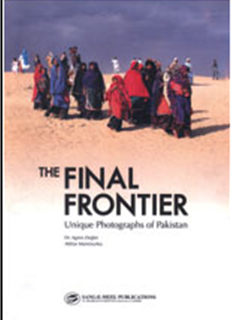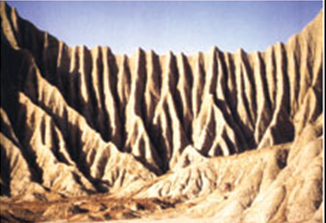Pakistan
This is a collection of articles archived for the excellence of their content. Readers will be able to edit existing articles and post new articles directly |
Pakistan As A Whole Photo Book
Captured on camera
By A.M. Shah
Despite the abject poverty among the majority of its people, the degredation of national intellect, religious intolerance and political dishonesty combining into general instability, Pakistan does have a strong attraction; that is if anyone looks beyond the mist of negative first-sights, impressions and of course, the negative press reports.
Two such people, Dr. Agnes Ziegler, a German dentist and Akhtar Mummunka, a professional tourist guide based in Lahore, have worked over the years to capture on film the multi-dimensional beauty of this land of the pure. This beauty has always been there. From the time recorded history began till the present, during which great upheavals visited the land and continue to do so, the generic freshness, colour and variety of the regions comprising Pakistan, from the Arabian Sea to the Himalayas, remain strong and vibrant. However, as Mummunka says in his introduction, modern technology and communications is fast threatening this natural beauty, something Alexander, Timur or Babur could never do.
The coffee-table pictorial book, The final Frontier, Unique Photographs of Pakistan captures the multi-cultural variations of the Pakistani nation, focusing on people and monuments that still cling to the bosom of mother-nature. The book begins with the great Sindhu River, Indus, telling its own story, of how a great civilization flourished along its banks, no less advanced than the great Sumer. The reader is taken along it course upstream, being enlightened both with history and images of the people and places that still retain their ancient ways, and the ruins of a once great city, Moenjodaro.
The boat people, Mohanas (not Mahanas!) of ancient Med stock, who are born and bred and live on boats, only to be buried on land, are captured in their natural state. Although the location, the stretch of the Indus cutting through the twin upper Sindh towns of Sukkur and Rohri do not boast of the actual boat villages that are found on the great Manchar Lake in Dadu district, the photographs in terms of choice-of-subject tell the true story of the ancient Mohanas. The reader travels along the course of the Indus through the length and breadth of Pakistan northwards. This chapter is enthralling as the revealing photography coupled with the tale of the Indus tends to take the reader into a time machine-like journey through the ages, where the present is but a halo, only to bounce back into the conscience some while after the journey ends.
As each of the succeeding chapters depict a separate province of the country, the photography succeeds in highlighting the differences in folkways, mores, living styles, habitat and of course moods and expressions. The two authors travel with Gul Bibis Pawindah (nomad) family on their seasonal migration in the north is a unique pictorial travelogue, that should surely attract the foreigner, if not the lacklustre local.
Photography is indeed a distinct art-form. It can also be taken as painting in a hurry! Dr. Ziegler and Akhtar Sahib have done justice to the art of photography, in that they have captured the vivid topography, the colour and mood of this land. Whether professional or amateur, their photographs befit any top class nature presentation, even though it takes much, much more to capture landscape in the style of Ansel Adams or portraiture like Lord Snowdon. This book however, is a must have for every traveller within Pakistan, local and foreign. It should also be circulated among school libraries as for young children, there could be no better introduction to Pakistan.
Credit goes to Sang-e-Meel, for supporting such work, however a word of advice the covers of such big books, (Charles Balls two-volumed Indian Mutiny is another example) should be of better quality material that does not warp!



